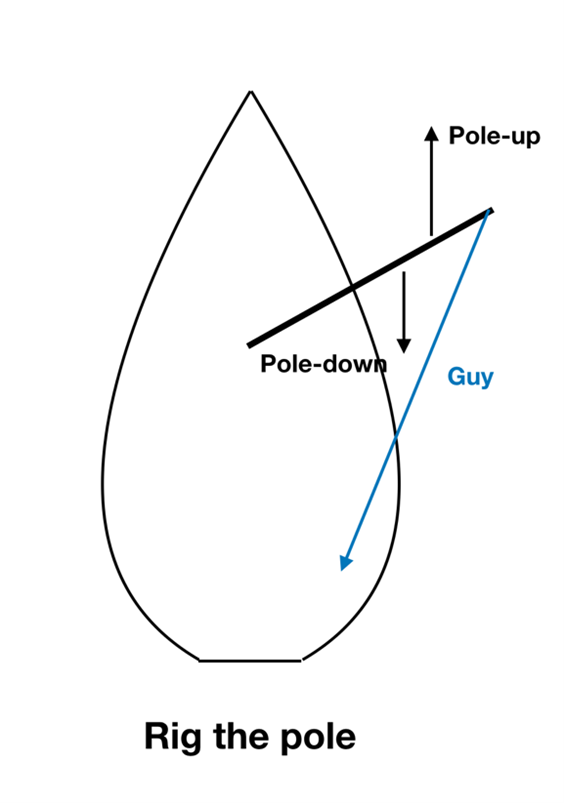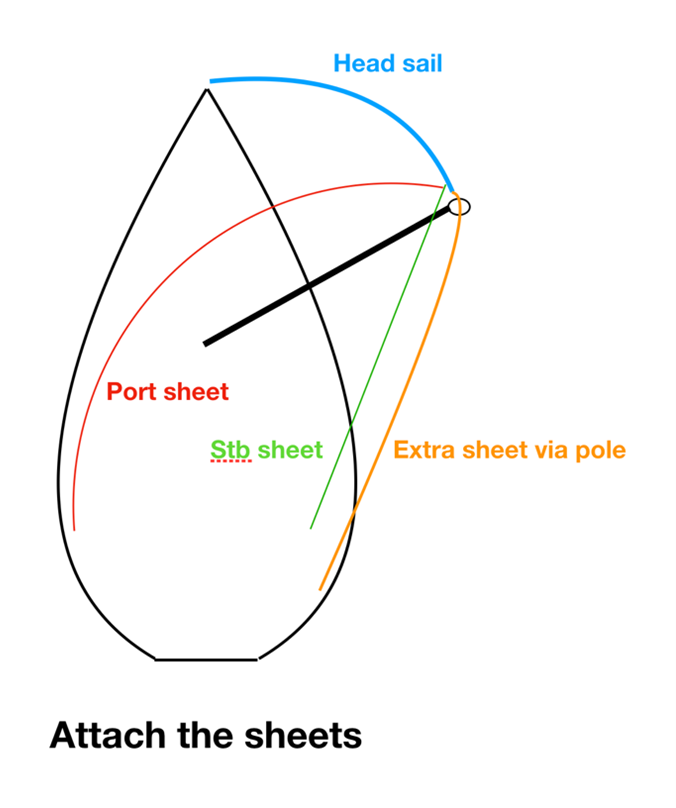When broad reaching or running the foresail tends to get blanketed by the main. The sail just refuses to fill steadily, especially with some sea state. The top of the mast pulls the sail from side to side, resulting in flapping and losing drive.
A solution to this problem is poling-out the foresail. The conventional set-up of the spinnaker pole has the following attention points:
- Lots of power on the pole (especially when the sail is attached to the pole)
- Unable to gybe or maneuver
- Pole unstable when sail is furled
Here we will discuss a different way of poling out the foresail. We’ll rig the pole using:
- pole up (uphaul)
- pole down (downhaul)
- guy
Now the pole is fixed and remains stable also when not under load.
The normal jib-sheets remain attached to the clew of the sail, not via the pole. Using these sheets, we can still tack and gybe and furl the foresail. It is even possible to sail upwind up to a close reach, so the yacht remains maneuverable.
A single extra sheet (long) is attached to the sail and fed aft via the pole.
Via the extra sheet you are able to run flat downwind with a flattened foresail. When using the normal sheets there is no load on the pole, while the pole remains stable due to the uphaul, downhaul and guy.
We can do the same with the boom. Using the downhaul, preventer and sheets we can secure the boom which prevents the main from flapping. This way we have a safe and stable set-up for downwind sailing!
(Article written by Albert de Nijs for Dutch Offshore Sailing Academy / Zeezeilers.nl)




